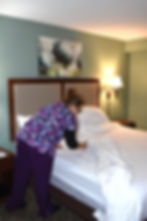
JOIN OUR TEAM
Commonwealth Registry of Nurses, Inc.
Home Care Aide Career Opportunities
Home care professionals make a difference.
According to the United States Government, Home Care Aides are one of the fastest growing jobs in the country!
We are hiring CNA's, HHA's,
Call 413-527-2527 or 413-345-3710
CRN HOME CARE AD ON CALL THE MIDWIFE NEPM
Commonwealth Registry of Nurses's =NEPM Sponsorship

Representing Commonwealth Registry of Nurses, Inc. 2023 Turkey Race to raise funds for Easthampton Food Pantry. ! Great Team !

JOIN OUR TEAM-
Commonwealth Registry of Nurses, Inc.
Home Care Aide Career Opportunities
Home care professionals make a difference.
According to the United States Government, Home Care Aides are one of the fastest growing jobs in the country!
Learn new skills and join this rewarding profession.
visit www.mass.gov/PHCAST for details regarding free online courses =
Personal and Home Care Aide State Training (PHCAST) - The free, online course is the next step to your in-home health care career.
NEPM CRN HOMECARE SPONSORSHIP
Commonwealth Registry
of Nurses, Inc.
Home Care. Makes Life Easier.
Serving the Pioneer Valley and surrounding communities since 1989.
Everyone's home care needs are unique and healing is faster, better
and more comfortable at home; surrounded by family and friends.
Because there is no place like home ......when you are recovering from an illness or injury.
Providing the maximum amount of freedom for the individual, protecting their dignity, and
preserving their independence with comprehensive health care and support services in your home,
from 2 hours to 24 hours a day - 7 days a week.
This means real nursing care - one human being caring for another. Our team provides
Private Nursing Services where ever you reside; Home, Hospital, Nursing Home or Assisted Living.
On our staff are R.N.'s , L.P.N.'s and Certified Nurses Aides/Home Health Aides.
Call today for a free complete Home Care assessment and evaluation of your
needs by one of our highly trained nurses.
Find out why ---------------------
" Our Nurses are the Nicest"

Exercise and Fitness




Exercise can be beneficial for anyone – at any age. Exercise makes the heart stronger enabling it to pump more blood and deliver more oxygen throughout the body. Exercise can also increase flexibility, strength and bone mass and help to regulate the bowel, control diabetes (for some people), lower blood pressure, reduce stress, reduce body fat, and lower cholesterol.
With so many healthful benefits, why would anyone not exercise – regardless of his or her age? There is a common misconception that our bodies will inevitably become slower, frailer and less mobile as we age. Physical decline is not an unavoidable part of the aging process. Inactivity is more often the cause of frailty in the elderly. Even people residing in nursing facilities, who exercise regularly can improve their strength, balance and flexibility. Many common health problems can be prevented or reversed with regular physical activity.
A daily program of exercise for 20-30 minutes is all that it takes! Activities such as walking, cycling, jogging, swimming or dancing can improve the functions of the heart, lungs and circulation. Walking can be done year round – indoors or out, the benefits are the same.
The safe way to begin an exercise program is to have a complete physical examination and consult with your physician or health practitioner about any limitations or precautions. Start slowly (about 5-10 minutes a day) and gradually increase the amount of exercise and the length of time. Do not continue to exercise if you experience any pain from a specific motion. Contact your doctor if the pain does not disappear within 48 hours or if it becomes severe on one side of the body.
Once you are able to exercise for 10 minutes comfortably, you should begin a program of exercising every other day and work up to about 30 minutes of continuous exercise. It is important to allow the muscles about 48 hours to recover from the extra use. Exercising on alternate days with a rest period in between can also reduce your risk of injury.
The key to maintaining a successful exercise program is to make it appealing. Here are some suggestions that you might incorporate:
Choose activities that you enjoy
Make small changes in your daily routine so that physical activity becomes a regular part of your day
Exercise with a group, a friend or alone – whichever is the easiest and most fun for you
Be realistic about what you can do
What about those of us who have a medical condition that impedes or limits our ability to exercise? A successful exercise program can be designed to accommodate just about any condition.
People with bad knees may find that cycling can be done with little or no discomfort. Swimming is another exercise that is gentle on all of the joints in the body.
People with varicose veins will find that a walking program can stimulate and improve circulation.
Contact your local Senior Center or YMCA for information about exercise programs that they offer. The local YMCA’s run regular classes in Adult Fitness and Senior Fitness in addition to their youth programs. Your local library can also assist you with books and videos relating to exercise and aging.
Holyoke Sun Article for 4/22/98

Commonwealth Registry of Nurses, Inc.
413-527-2527
Home Care. Makes Life Easier.
Celebrating 35 years of providing exceptional
Homecare Services since 1989
Comprehensive Homecare Services with
In-Home Skilled Nursing Care
Call us for a free complete needs assessment by one of our highly trained nurses.
call or text (413) 345-3710
email : CRNHOMECARE@msn.com





